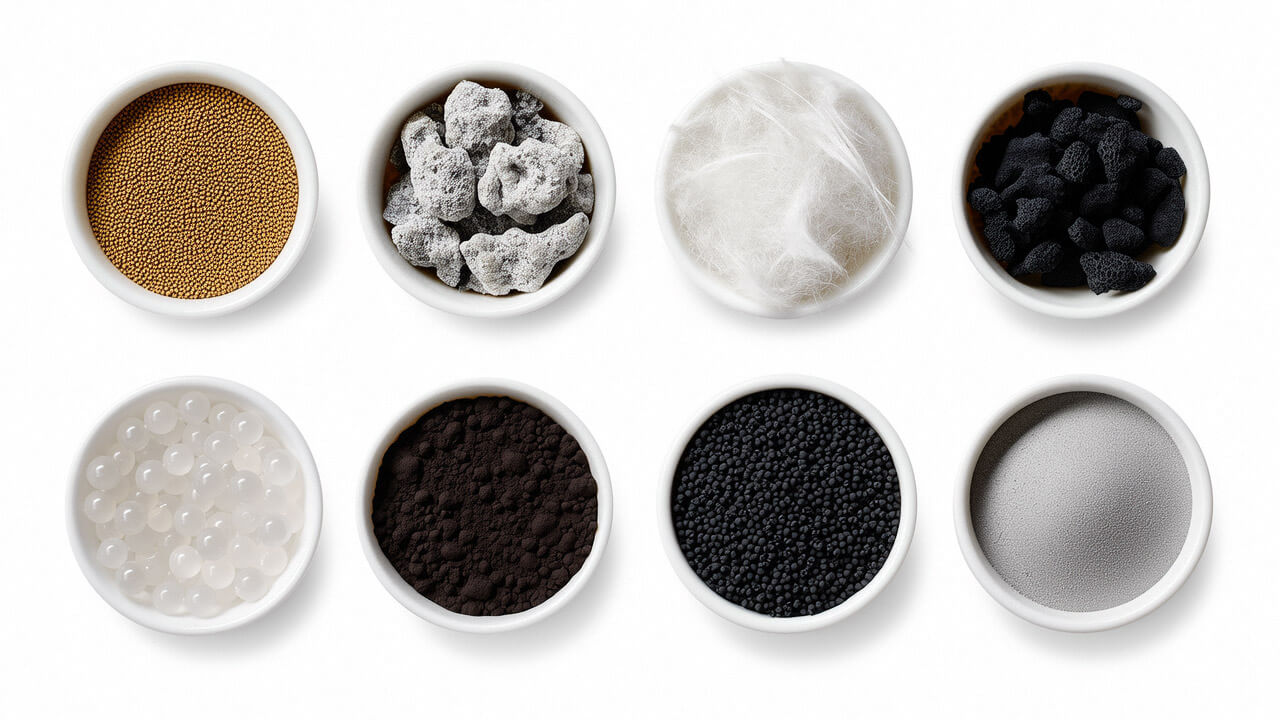Filter aids are auxiliary materials used to improve filtration efficiency, typically added to liquids or slurries to enhance filtration performance. The primary functions of filter aids are to increase the porosity of the filter cake, reduce filter cake resistance, and improve filtration speed and precision. Below are common types of filter aids and their characteristics:
1. Diatomaceous Earth: Made from fossilized diatoms, primarily composed of silicon dioxide.
Characteristics:
- Porous structure with high surface area.
- Chemically stable, resistant to acids and alkalis.
- Suitable for filtering various liquids, such as beer, wine, fruit juice, and pharmaceuticals.
Applications: Food and beverage, pharmaceutical, and chemical industries.
2. Perlite: Produced by expanding volcanic rock at high temperatures.
Characteristics:
- Lightweight and porous, with high filtration efficiency.
- Low cost, economical, and practical.
- Suitable for filtering medium-viscosity liquids.
Applications: Food, chemical, and water treatment industries.
3. Cellulose: Extracted from plant fibers, such as wood pulp or cotton.
Characteristics:
- Biodegradable and environmentally friendly.
- Suitable for filtering high-viscosity liquids.
- Can be mixed with other filter aids.
Applications: Pharmaceutical, food, and cosmetics industries.
4. Activated Carbon: Made from materials like wood or coconut shells through high-temperature carbonization and activation.
Characteristics:
- Strong adsorption capacity, capable of removing odors, pigments, and organic pollutants.
- Suitable for liquids requiring decolorization and purification.
Applications: Water treatment, food and beverage, and pharmaceutical purification.
5. Silica Gel: Produced by reacting sodium silicate with sulfuric acid.
Characteristics:
- High adsorption capacity, suitable for removing trace impurities.
- Heat-resistant and chemically stable.
Applications: Chemical, pharmaceutical, and laboratory analysis.
6. Bentonite: A natural clay mineral, primarily composed of montmorillonite.
Characteristics:
- Excellent adsorption and ion exchange capabilities.
- Suitable for filtering and clarifying high-viscosity liquids.
Applications: Wine clarification, oil refining, and wastewater treatment.
7. Quartz Sand: Crushed from natural quartz ore.
Characteristics:
- High hardness and chemical stability.
- Suitable for coarse filtration and pretreatment.
Applications: Water treatment and swimming pool filtration.
8. Ceramic Powder: Made from ceramic materials like alumina or zirconia.
Characteristics:
- Heat-resistant and corrosion-resistant.
- Suitable for high-precision filtration.
Applications: Chemical, pharmaceutical, and electronics industries.
Factors for Selecting Filter Aids
- Filtration Goals: Choose filter aids based on the properties of the liquid or slurry (e.g., viscosity, solid content).
- Filtration Precision: The porosity and particle size distribution of filter aids affect filtration precision.
- Chemical Compatibility: Filter aids must be chemically compatible with the liquid to avoid reactions.
- Cost: Select cost-effective filter aids based on budget.
- Environmental Friendliness: Prioritize biodegradable or recyclable filter aids.
Filter aids come in various types, including diatomaceous earth, perlite, cellulose, and activated carbon, each with unique advantages and applications. Selecting the right filter aid can significantly improve filtration efficiency, reduce costs, and ensure filtration quality. In practice, factors such as filtration goals, precision, cost, and environmental impact should be considered.
